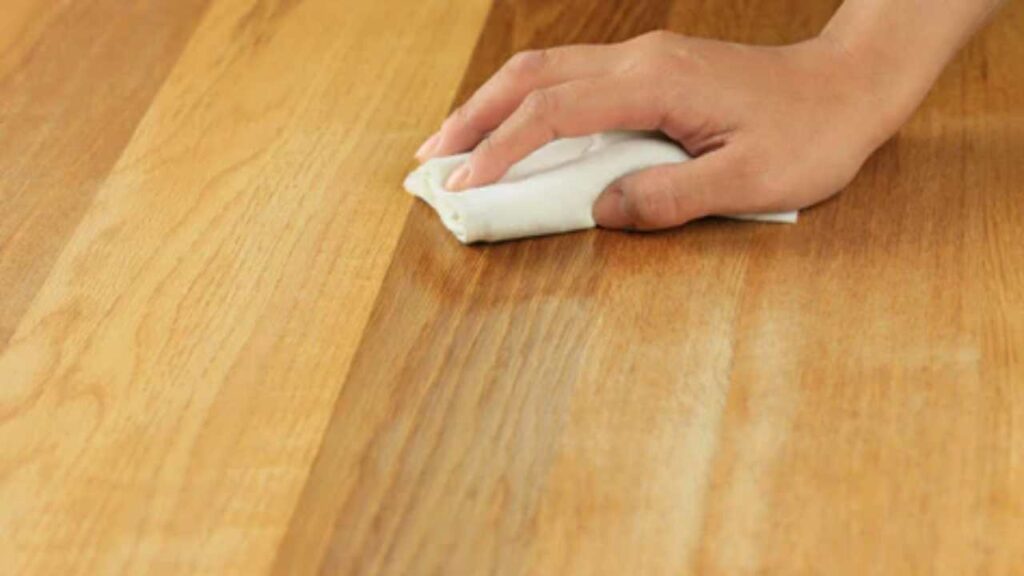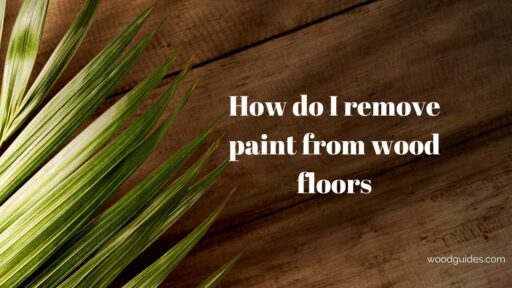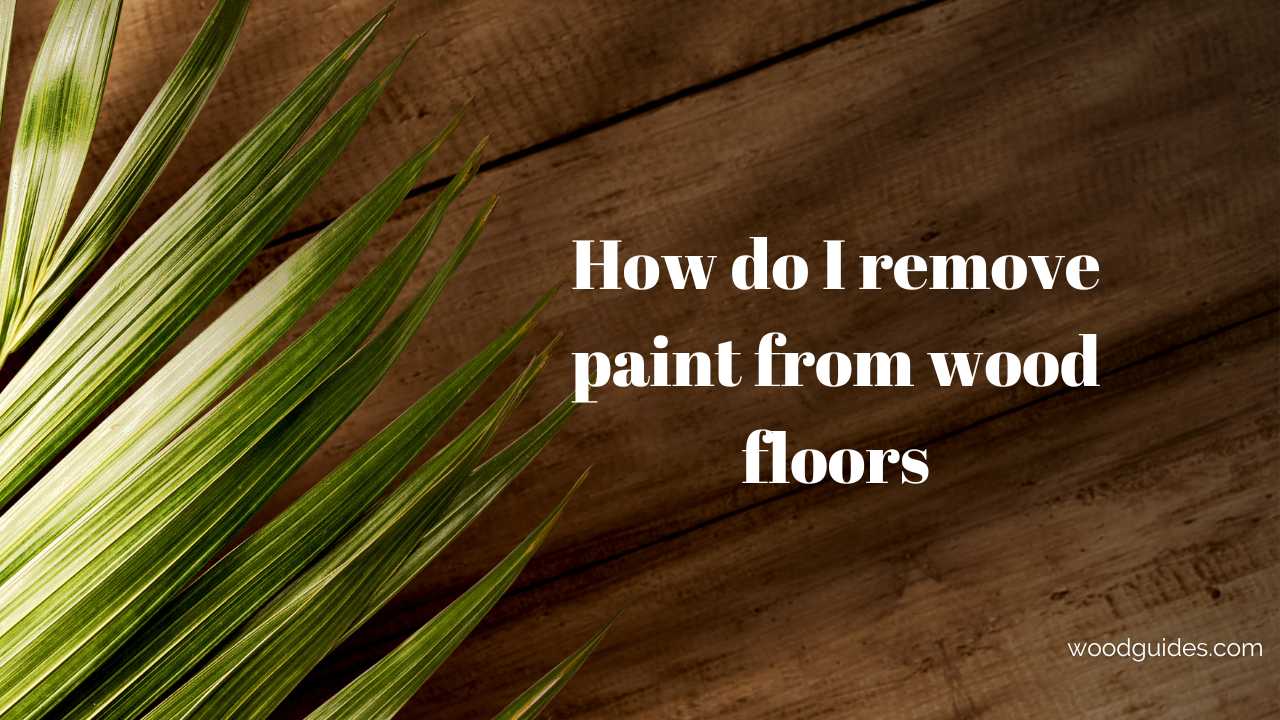Find step-by-step instructions and expert tips on How do i remove paint from wood floors effortlessly. Transform your space with our advice.
helpful the beauty of wood floors is crucial for homeowners, adding warmth and elegance to any room. However, accidents happen, and paint can find its way onto your precious wooden surfaces. This guide provides effective methods to remove paint from wood floors, ensuring they remain a focal point in your home.
Types of Paint
Before diving into the different methods of removing paint from wood floors, it is essential to understand the types of paint you may encounter. Knowing the type of paint will help you choose the most suitable removal method and reduce any potential damage to your floors.
Water-Based Paint
Water-based paint, also known as latex or acrylic, is a popular choice for interior walls. It is water-soluble, making it easy to clean up with just soap and water. If spilt on wood floors, water-based paint can usually be removed without much effort.
Oil-Based Paint
Oil-based paints are more durable and harder to remove than water-based paints. They contain solvents such as mineral spirits or turpentine, which make them resistant to water. If spilled on Wood Guide, oil-based paint requires more aggressive removal techniques.
Tools and Materials
Before beginning the process of removing paint from your wood floors, gather the following tools and materials:
- Plastic scraper or putty knife
- Soft cloths or rags
- Paint thinner (for oil-based paint)
- Dish soap and warm water
- Soft-bristled brush
- Sandpaper (optional)
Be sure to test any products on a small, inconspicuous area of your wood floor before using them on the paint spill.
Method 1: Scraping
If the spilt paint is still wet, you may be able to remove it using a plastic scraper or putty knife. Gently scrape off as much paint as possible, being careful not to scratch the wood surface. Once you have removed as much wet paint as possible, proceed with one of the following methods.
Method 2: Soap and Water
For water-based paints, mix a few drops of dish soap with warm water in a bucket or bowl. Dip a soft cloth or rag into the soapy water and gently scrub the paint spill in a circular motion. Be careful not to use too much force, as this may damage the wood fibres. Rinse the area with clean water and dry it with another cloth.
Method 3: Paint Thinner
For oil-based paints, you will need to use a stronger solution, such as paint thinner. Apply a small amount of paint thinner to a cloth and gently dab the affected area. Let it sit for a few minutes, then use a soft-bristled brush to scrub the paint spill in a circular motion. Rinse with clean water and dry with another cloth.

Method 4: Sanding (For Stubborn Paint)
If the above methods do not fully remove the paint spill, you may need to sand the affected area. Use fine-grit sandpaper and gently sand the paint until it is no longer visible. Be cautious not to sand too aggressively, as this can damage the wood surface. Once you have removed the paint, clean the area with a cloth and finish off with a wood polish.
Prevention Tips
Accidents happen, but there are steps you can take to prevent paint spills on your wood floors:
- Use drop cloths or plastic sheets to protect your floors when painting a room.
- Keep cleaning supplies nearby in case of accidental spills.
- Use painter’s tape to cover any exposed wood flooring edges near the walls or trim.
By following these tips, you can minimize the chances of having to remove paint from your wood floors.
Common Methods to Remove Paint from How do I remove paint from wood floors
Removing paint from wood floors can be approached in several ways, each suited to different types of paint and floor conditions. The primary methods include:
- Sanding
- Heat Gun
- Chemical Strippers
- Scraping and Solvents
Step-by-Step Guides for Each Method
A. Sanding
Sanding is effective for large areas with multiple paint layers.
- Equipment: You’ll need an orbital sander, sandpaper (coarse-grit to fine-grit), a vacuum, and a tack cloth.
- Safety Precautions: Wear a mask and ensure the area is well-ventilated.
- Instructions:
- Begin with coarse-grit sandpaper (60-80 grit) to remove the bulk of the paint.
- Progress to finer grits (120-150) for a smooth finish, sanding in the direction of the grain.
- Vacuum the dust, then wipe with a tack cloth for a clean preparation for staining or refinishing.
B. Heat Gun
Ideal for thick, stubborn paint layers without damaging the wood underneath.
- Best Practices: Hold the heat gun 6-8 inches away from the wood, moving it slowly over the painted area.
- Safety Measures: Wear heat-resistant gloves and a protective mask.
- Steps:
- Focus the heat gun on a small section until the paint bubbles.
- Immediately scrape the paint with a putty knife.
- Clean each section with a damp cloth after scraping.
C. Chemical Strippers
Chemical strippers are effective on almost all paint types, especially where sanding might damage the wood.
- Types: Choose a stripper suitable for the paint type; eco-friendly options are available.
- Application Methods: Apply generously with a brush, adhering to the manufacturer’s recommended dwell time.
- Cleanup: Scrape off the softened paint and rinse the area with a damp cloth or sponge.
D. Scraping and Solvents
This is for smaller spills or delicate surfaces where heavier methods can’t be used.
- Choosing the Right Solvent: Match the solvent to the paint type; test in a hidden area first.
- Techniques: Apply solvent to soften the paint, then scrape gently, following the grain.
- Post-removal Care: Clean with a damp cloth to remove solvent residue and ventilate the area well.
Factors to Consider When Choosing a Method
- Wood Floor Age and Condition: Older or more delicate floors may require gentler methods.
- Paint Type and Coverage: Some paints may respond better to specific removal techniques.
- Safety and Environment: Consider personal safety and environmental impact when choosing chemicals or equipment.
Tips for Prevention and Maintenance
- Use drop cloths or tape off areas when painting nearby.
- Regularly clean and polish wood floors to maintain their finish and make future spills easier to remove.
- If paint lands on the floor, remove it quickly with water or mineral spirits before it dries.
- Avoid using harsh chemicals on wood floors, as they can strip the finish and damage the wood fibers.
By taking preventative measures and promptly addressing any spills or accidents, you can keep your wood floors looking their best for years to come. So, always be cautious while painting near wooden surfaces and have the necessary cleaning supplies handy in case of any spillage. It’s also important to regularly maintain and clean your wood floors to prevent any buildup of paint or other substances that may be difficult to remove. With the right tools and techniques, you can keep your wood floors looking beautiful and free from pesky paint spills.
Happy painting! Remember, accidents happen, but with proper preparation and knowledge, we can easily overcome them without damaging our valuable wood floors. Keep these methods and prevention tips in mind for a stress-free painting experience! Happy DIY-ing! Now go forth and create your masterpiece with peace of mind, knowing you have the knowledge to prevent and remove any unwanted paint spills on your beautiful wood floors.
Additional Tips and Tricks
- Always read and follow the manufacturer’s instructions for any products used on your wood floors.
- If using chemical strippers, be sure to properly dispose of any leftover product according to local regulations.
- In some cases, it may be best to consult a professional for severe paint spills or delicate wood flooring. It’s always better to be safe than sorry!
Frequently Asked Questions (FAQs)
Can I remove paint from hardwood floors without sanding?
Yes, for water-based paints, a mixture of warm water and mild dish soap can effectively remove paint. For oil-based paints, using a specific solvent like mineral spirits can work. Always test any method in an inconspicuous area first to ensure it doesn’t damage the wood.
How do I know if the paint on my wood floor is water-based or oil-based?
To identify the type of paint, apply a bit of rubbing alcohol to a cotton ball and rub it on the paint. If the paint comes off, it’s likely water-based. If it doesn’t, you’re probably dealing with oil-based paint.
What safety precautions should I take when using a heat gun to remove paint?
Always wear heat-resistant gloves and a protective mask to avoid inhaling fumes or burning your hands. Keep the heat gun moving to prevent scorching the wood, and never leave it unattended while it’s on.
Are chemical strippers safe to use on all wood floors?
Chemical strippers can be used on most wood floors, but it’s crucial to choose a product that’s compatible with your specific type of wood and finish. Eco-friendly or less-toxic options are recommended for safety and environmental reasons. Always ventilate the area well when using chemical strippers.
After removing the paint, how should I treat the wood floor?
Once the paint is removed and the area is clean, it’s important to restore the wood’s protection and appearance. Apply a suitable wood floor polish or wax, following the manufacturer’s instructions. For extensive treatments, refinishing the wood may be the best option to ensure uniform appearance and protection.
How can I prevent paint from staining my wood floors in the future?
Prevention is key. Always use drop cloths or plastic sheeting to cover the floors when painting. Applying painter’s tape along the edges of the wood floors can also help prevent spills. Keep cleaning supplies on hand to address spills immediately should they occur.
Is it better to hire a professional to remove paint from wood floors?
If the paint coverage is extensive, the paint is very old and potentially contains lead, or if the wood floors are antique or of significant value, hiring a professional is recommended. Professionals have the tools, knowledge, and experience to remove paint safely and effectively without damaging the wood.
Conclusion on How do I remove paint from wood floors
Removing paint from How do I remove paint from wood floors need not be daunting. With the right approach and a little elbow grease, your floors can be restored to their original glory. Remember, patience and careful selection of the removal method are key to avoiding damage to your beautiful wood floors.
Have you tackled a paint spill on wood floors before? Share your experiences or tips below. For more home maintenance insights, don’t hesitate to explore our related content.





